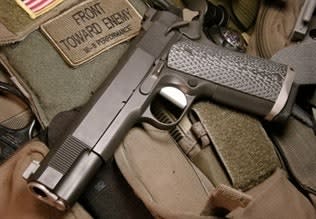Let's assume you've already chosen a pistol — if not, view "Choosing a 1911 For Duty Use" on my Web site for my recommended candidates. There are six main areas to cover so you can set yourself up for success.
Magazines: Don't go cheap, when choosing magazines for your duty 1911 because they'll play a large role in the success or failure of your pistol. Ditch the factory mags that came with your gun, and get some proven service-quality mags. I use and recommend Chip McCormick Power Mags; a longer treatise on mags can be found at my Web site.
Ammunition: Test fire your gun with as much hollow-point service ammunition as you can. Get at least 200 rounds of JHP (jacketed hollow-point) ammo through your gun with the new mags to make sure that all is well. If your agency uses more than one type of approved ammunition, find the one that works best in your gun.
Loctite: A little bit of judiciously applied Loctite can prevent a lot of headaches down the road. By virtue of its design, the 1911 has more components than newer designs; many of these can work loose with wear. Try some Threadlocker Blue 242 on your rear-sight set screw and grip screws, and some wicking Threadlocker Green 290 on your plunger tube, grip screw bushings, and front sight.
Watch Your Extractor: The extractor is a critical component of your 1911, and requires the user to stay on top of it for maximum reliability. Learn to be aware of the proper ejection pattern for your gun. A consistent pattern from 3 to 5 o'clock is ideal, and it should never dribble out or eject to 12 o'clock, 6 o'clock, or to the left of the gun. Any of these incidents is an early warning sign of impending extractor failure.












